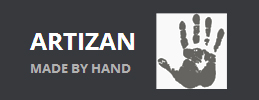Sponsorship Opportunities:
It’s a win/win!
Get seen at a great rate while helping others!
Currently we have two opportunities for Sponsorship: An advertising one that is described on this page and the Amiga Fund, an effort to support emerging or low income artists and businesses who can benefit from membership with Artizan Made. Both Artizan Made and TAFA: The Textile and Fiber Art List, our sister site, aim to help the handmade community broaden their reach online in an affordable way. The ad sponsors help fund these efforts.
Our main asset at this time is TAFA’s Facebook page which has over 44,000 followers and an excellent reach. This following was mostly built before Facebook became so greedy, forcing all of us to pay to get seen. We remain there because we have a huge community that we have invested in and the platform still offers many uses. Anyone wanting to grow their Facebook pages and tap into our following will benefit by becoming a Sponsor.
Two Plans:
Yearly: $250/year gets you a sponsor ad on this page and in our sidebar plus two posts a month on TAFA’s Facebook page, which has over 44,000 followers.
Monthly: Same deal for $25/month. (3 months minimum)
The ads shown on this page show up on Artizan Made’s sidebar randomly.
Click here to place your ad
Fields will open up where you can process your payment and then load your content. You can update your content at any time.
How it works:
Artizan Made grew out of our sister site, TAFA: The Textile and Fiber Art List, a business association of studio artists, educators, institutions, fair traders and others working online with art quilts, weavings, felting, embroidery, and other needle arts. TAFA’s website, currently under a major rebuild, boasts over 550 international members, many of whom have earned recognition worldwide for their exceptional works or projects.
TAFA’s new site is expected to launch in Spring of 2023. Meanwhile, we are using TAFA’s Facebook page to promote our Sponsors as every post there reaches 1,200 people immediately and expands as the post is shared, liked or commented on. TAFA’s Facebook audience is mostly made up of creative women over 40 who are well educated and enjoy travel.
 How we post: If the Sponsor has a Facebook page, we normally check to see what is being promoted there and reinforce that. If there is no new content, we go to the website and pick something we think will interest our audience. We make an effort not to duplicate posts and create an album for the Sponsor which is updated twice a year with the past post images. Our audience responds best to beautiful images, so we try to avoid ones that have too much text. Facebook also lowers the reach of images with more than 30% text. See our Sponsor albums here.
How we post: If the Sponsor has a Facebook page, we normally check to see what is being promoted there and reinforce that. If there is no new content, we go to the website and pick something we think will interest our audience. We make an effort not to duplicate posts and create an album for the Sponsor which is updated twice a year with the past post images. Our audience responds best to beautiful images, so we try to avoid ones that have too much text. Facebook also lowers the reach of images with more than 30% text. See our Sponsor albums here.
Physical ads on Artizan Made: Click on a couple of the ads you see below and you will see how they display. Each ad has 6 images, one live link and plenty of room for text. The Sponsor has access to their ad and can update them at any time. Four of these ads display randomly on Artizan Made’s sidebars.
Special bonus:
TAFA’s new site will use the same ad system and all current Sponsors will get a free ad for one year on the site!
TAFA was launched in 2010 and Sponsorships have remained the same price for all of these years. Our main goal with both TAFA and Artizan Made is to help the handmade community expand their reach in an affordable way. The Sponsorships help us do that.
Do you have an online shop selling handmade products? Artizan Made is a marketing collective that may interest you. Learn more about membership on the Join Page. Our focus products are Home Décor and Eco Fashion.
Questions? Here’s our Contact Page.
Current Sponsors
KnittingTours.com
Gone Rustic
Price: $120.00
Aya Fiber Studio
Folkwear Patterns
Peters Valley School of Craft
Jane Dunnewold
HoonArts
Laura Lee Burch Textile Artist
Cindy Grisdela Art Quilts
MarketPlace: Handwork of India
Ann Dunbar
Jane Porter Fashion
Rowan Tree Travel & Fibercraft
Linnea Pergola Art
Itsa Studio
Pacific Northwest Art School Workshops
Price: $500.00
Discover more from Artizan Made
Subscribe to get the latest posts to your email.

















